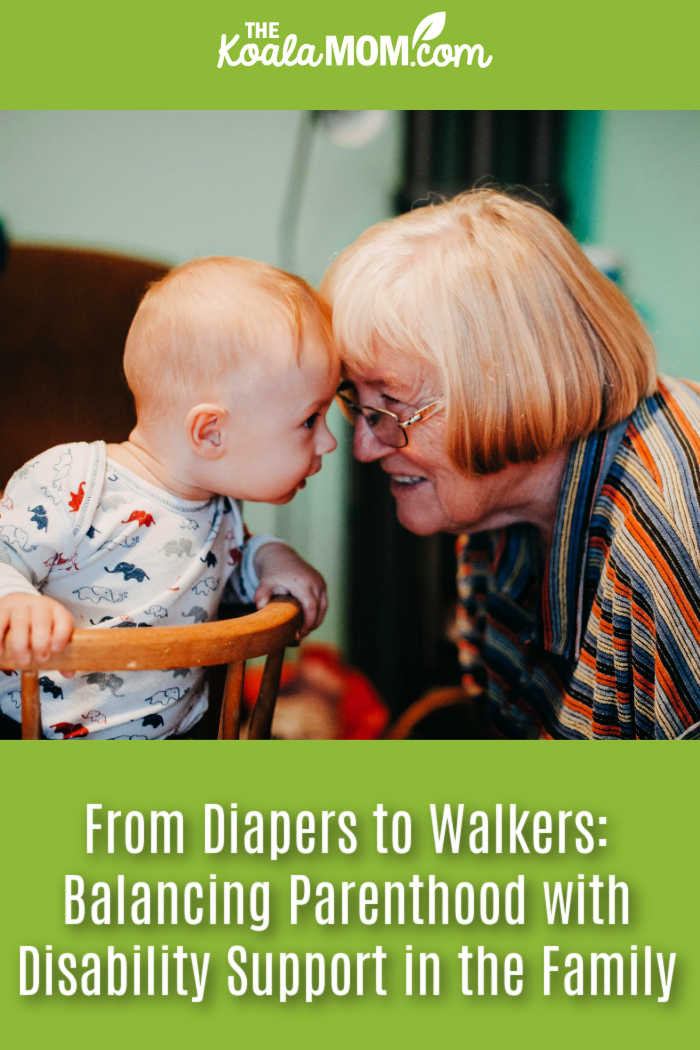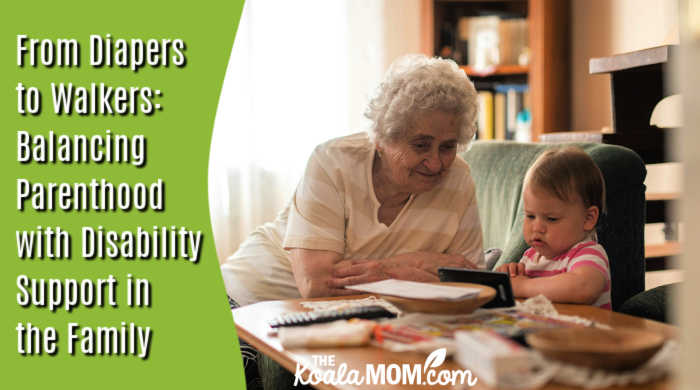Motherhood is rarely a one-size-fits-all journey. For many women, raising children overlaps with another demanding role, such as caring for a disabled spouse or aging parent. This balancing act, often called being part of the “sandwich generation,” means tending to the needs of the young and the elderly at the same time.
The experience can be deeply rewarding, but also overwhelming. Managing bottle feedings and physical therapy appointments, coordinating school runs and doctor visits, is a nonstop dance that leaves little time for rest. Still, with the right mindset and environment, it is possible to create a nurturing home that supports everyone under your roof.

Understanding a Multi-generational Dynamic
Every person in your household has unique emotional and physical needs. Children require consistency, play, and attention. A disabled adult or aging parent may need help with mobility, medical support, and a quiet space to recharge. These contrasting needs can create friction if not acknowledged and managed proactively.
It’s helpful to think of your household as an interconnected ecosystem. Open conversations about roles, expectations, and feelings can reduce misunderstandings. Children may not fully grasp why grandma needs extra help or why mom seems distracted, but honest and age-appropriate discussions build empathy and resilience.
Emotional Load and the Need for Grace
It’s easy for mothers in this situation to feel like they’re never doing enough. But managing the needs of multiple generations is a heavy emotional and physical responsibility. Guilt, exhaustion, and even resentment may surface, and that’s okay.
Allow yourself to feel what you feel, without judgment. Lean on support systems wherever possible, whether that’s friends, faith communities, therapists, or online groups where others understand the dual pressures you’re facing. Prioritizing your emotional well-being isn’t selfish, it’s essential for long-term sustainability.
Making the Home Work for Everyone
When your home is shared by children and adults with disabilities or aging-related limitations, safety and accessibility become essential. A thoughtfully designed living space can significantly reduce daily stress and make care-giving tasks easier for everyone.
Here are a few family-friendly, accessibility-focused ideas that support both kids and adults:
- No-step entries and wide hallways accommodate wheelchairs, walkers, and even strollers.
- Non-slip flooring is safer for toddlers learning to walk and seniors prone to falls.
- Lever-style door handles are easier for arthritic hands and little fingers to use.
- Walk-in showers and grab bars improve bathroom safety for aging loved ones and provide peace of mind.
- Lowered light switches and countertops can help everyone feel more independent.
- Dedicated spaces for play, including play structures, to prevent horseplay in other areas.
The goal is to create a space that is not only functional but also warm and welcoming—a true family home where each member can thrive.
Routines, Boundaries, and Realistic Expectations
A consistent daily rhythm can help manage the chaos. Establish predictable routines for meals, rest, play, and care-giving tasks. This predictability benefits children and aging parents alike, both of whom find comfort in structure.
But flexibility is just as important. Illness, appointments, and unexpected meltdowns will happen. Learn to pivot without guilt. More importantly, set boundaries to protect your mental health. It’s okay to say no to obligations that drain you, and it’s okay to ask for help.
You might consider in-home respite care, meal services, or part-time childcare, depending on your needs. Even a couple of hours a week can provide a valuable break.
Teaching Children Empathy Through Gentle Involvement
When done thoughtfully, involving your kids in care giving can be a powerful way to teach compassion and responsibility. Children can help fetch items, read stories, or keep a loved one company during quiet moments.
That said, care giving should never become their burden. Their involvement should be light, guided, and age-appropriate. Children still need space to just be kids, and it’s important they don’t feel responsible for the emotional or physical care of a parent or grandparent.
Supporting a Partner Living with Disability
If your spouse is transitioning into retirement due to a disability, the shift can be emotionally complicated. There may be grief over lost independence or career identity. They may struggle with accepting help or redefining their role within the family.
Support them in finding purpose, whether through hobbies, family involvement, or part-time roles that honor their capabilities. Encourage open communication about how they’re feeling, and try to include them in family routines in ways that make them feel empowered rather than sidelined.
Understanding available benefits, resources, and advocacy services can also ease some of the stress around finances and medical support. Don’t be afraid to explore legal or financial advice as you navigate this phase together.
Care for the Caregiver
In the flurry of meeting everyone else’s needs, it’s common for caregivers to put themselves last. But burnout is real, and it can affect your physical health, emotional stability, and the quality of care you provide.
Make time for yourself, even in small ways. Wake up 15 minutes early to enjoy quiet coffee, go for a short walk, and read a chapter of a book during nap time. These moments add up. When possible, carve out time for friendships and passions beyond care giving and parenting. You are more than your to-do list.

Building a Family Legacy of Love
Balancing diapers and walkers is not easy. But in doing so, you’re modeling strength, patience, and love to your children. You’re offering dignity and support to someone who may have once cared for you.
This stage of life might feel chaotic or isolating at times, but it’s also a powerful season of connection. With intention, boundaries, and the right environment, your home can be a haven for the youngest and oldest members of your family alike.

No Responses Yet